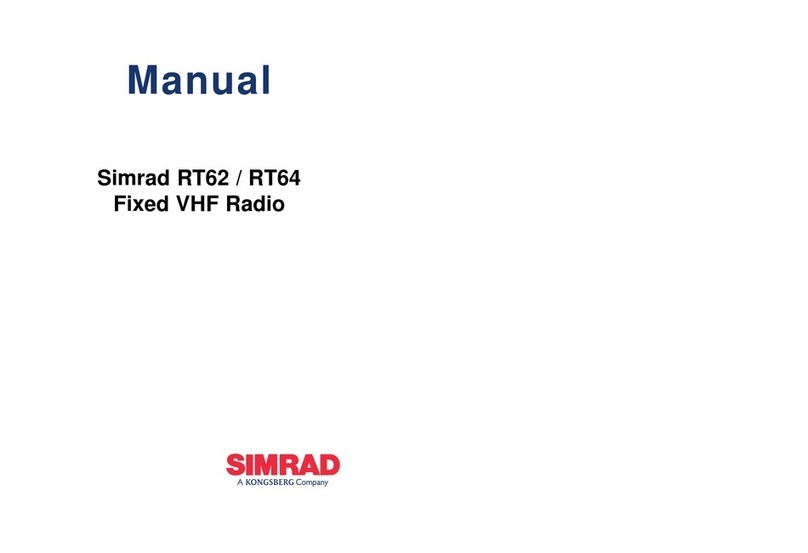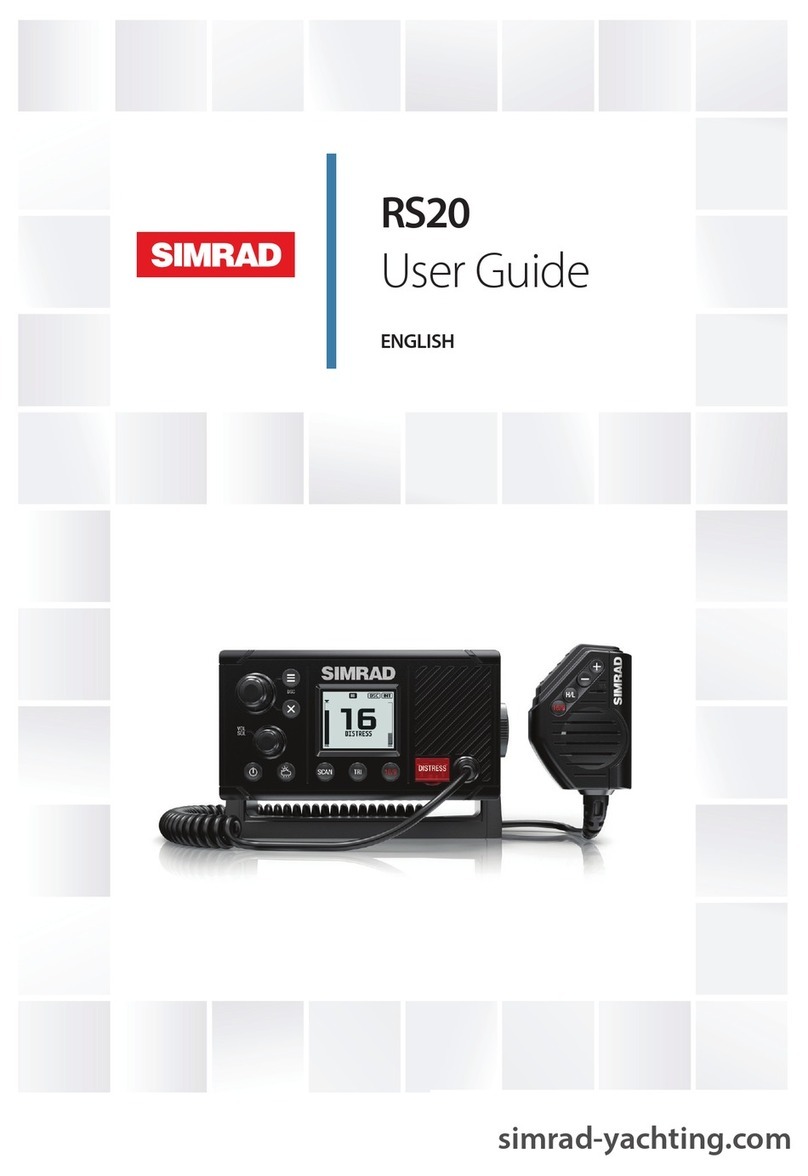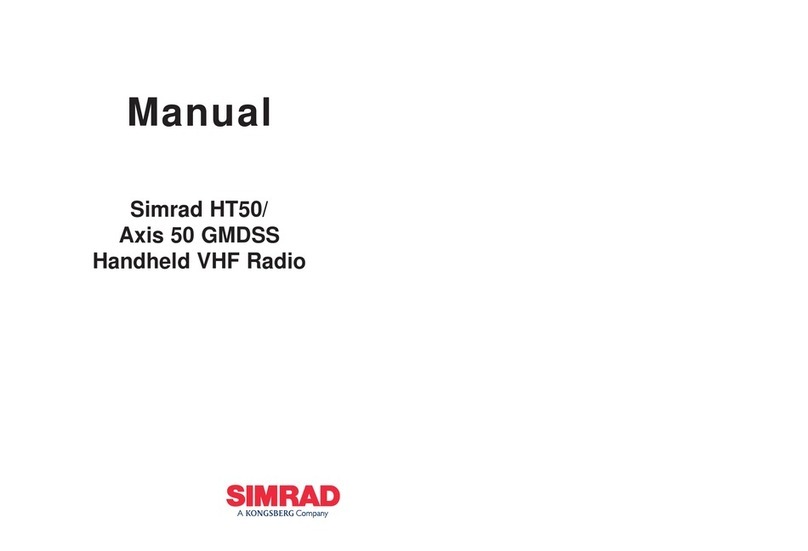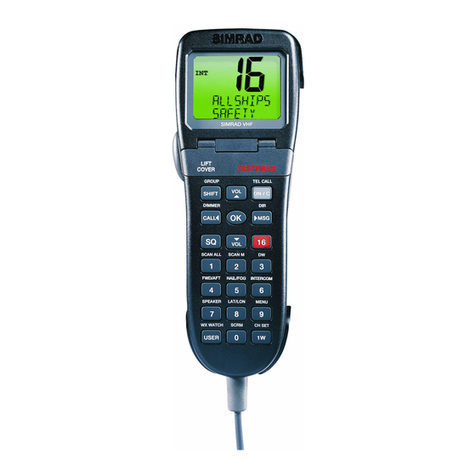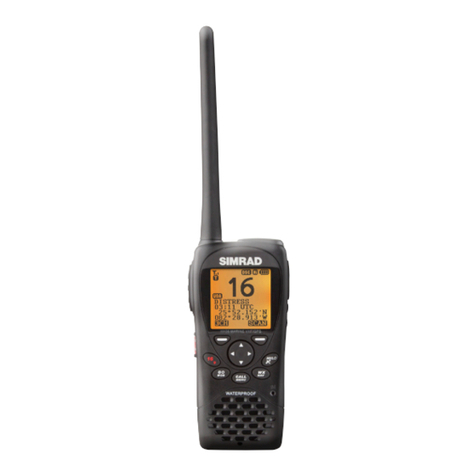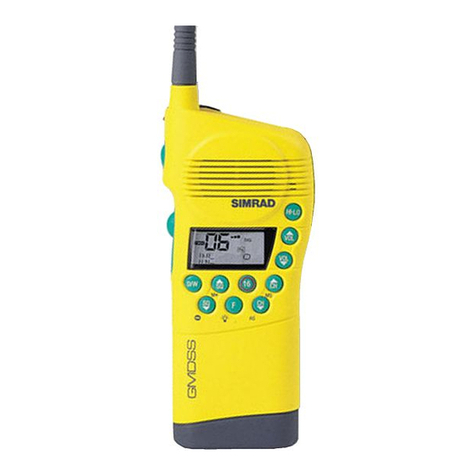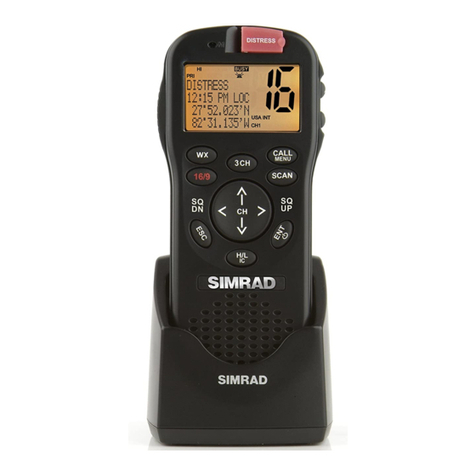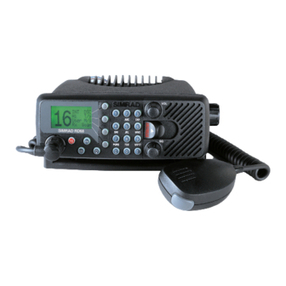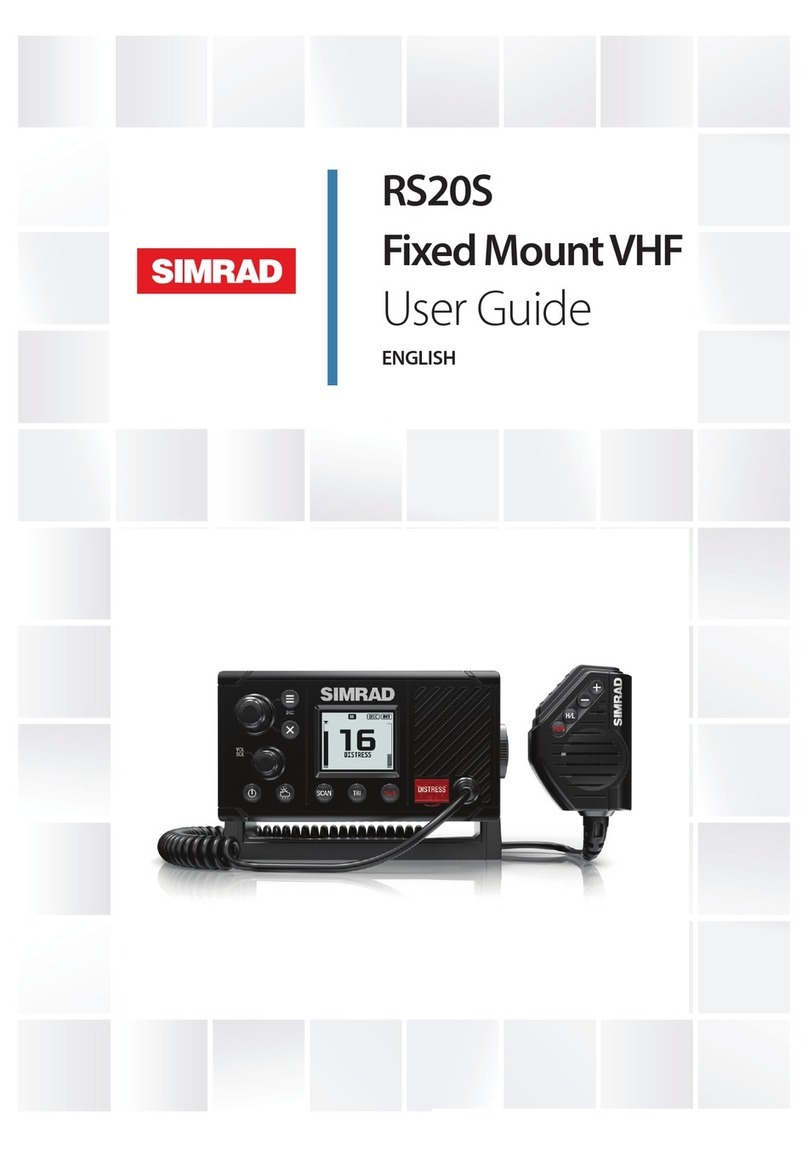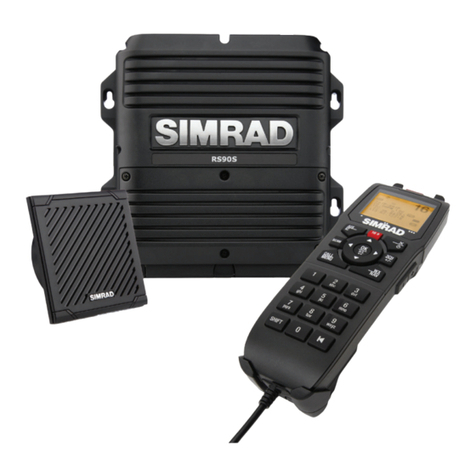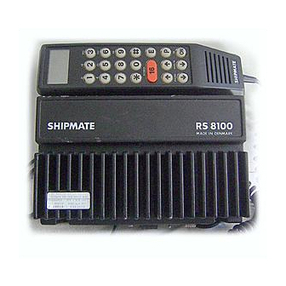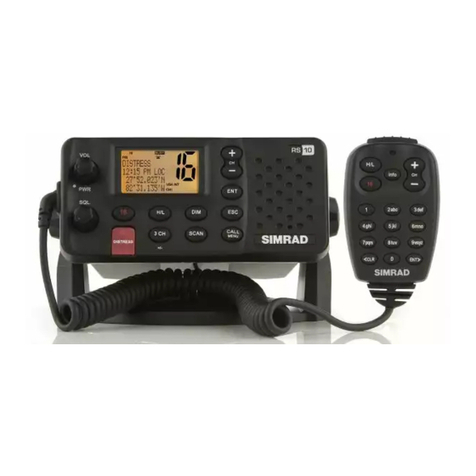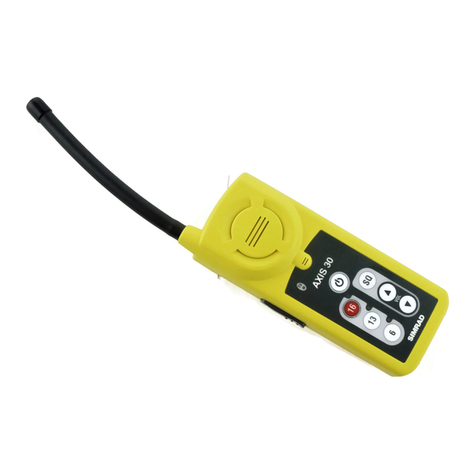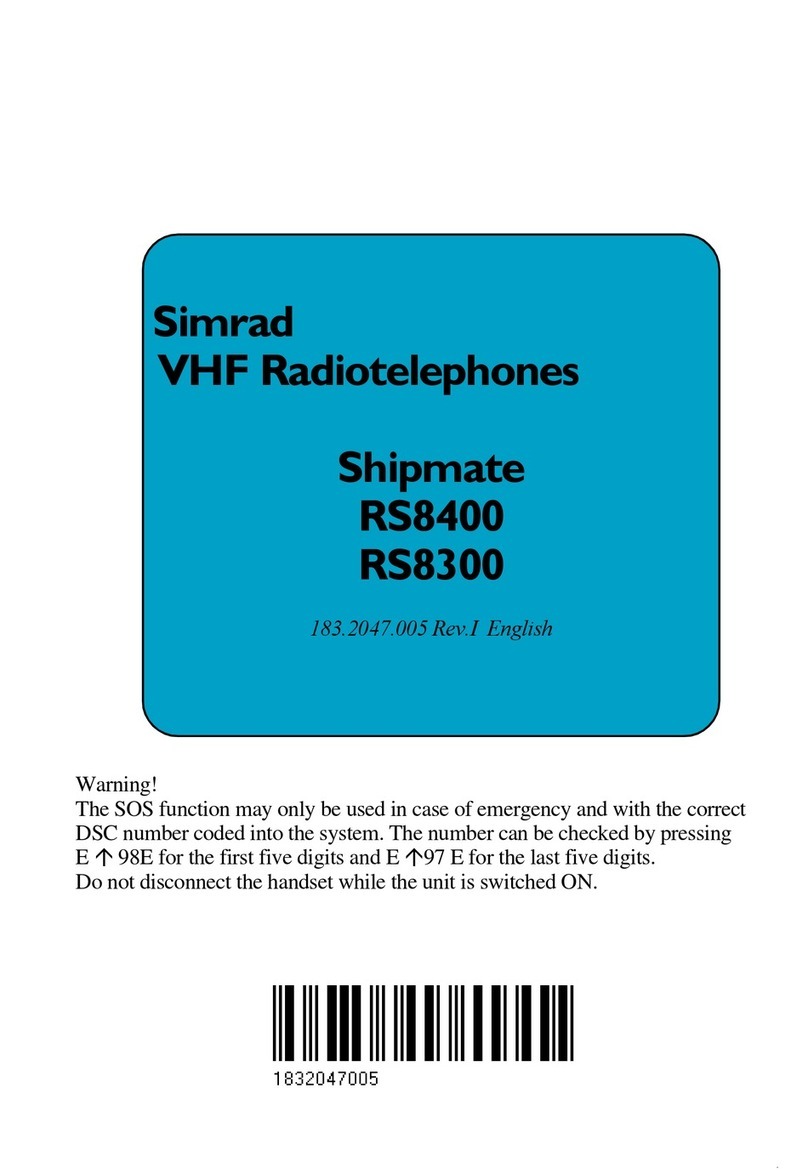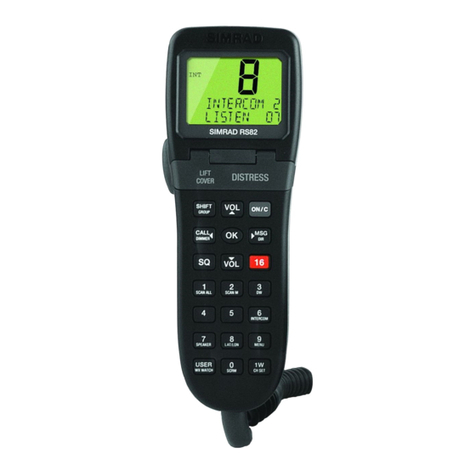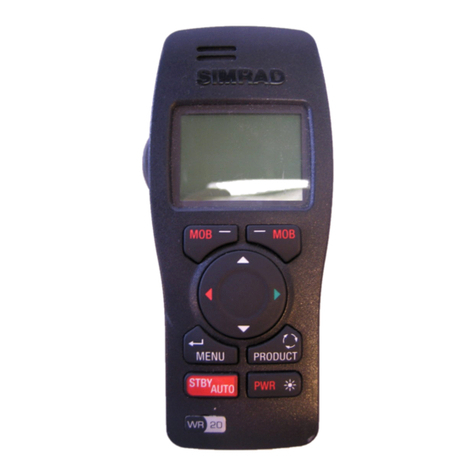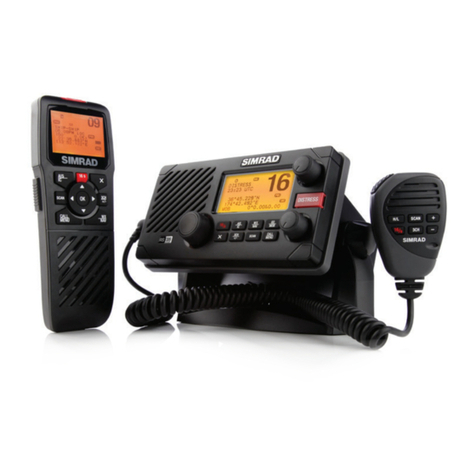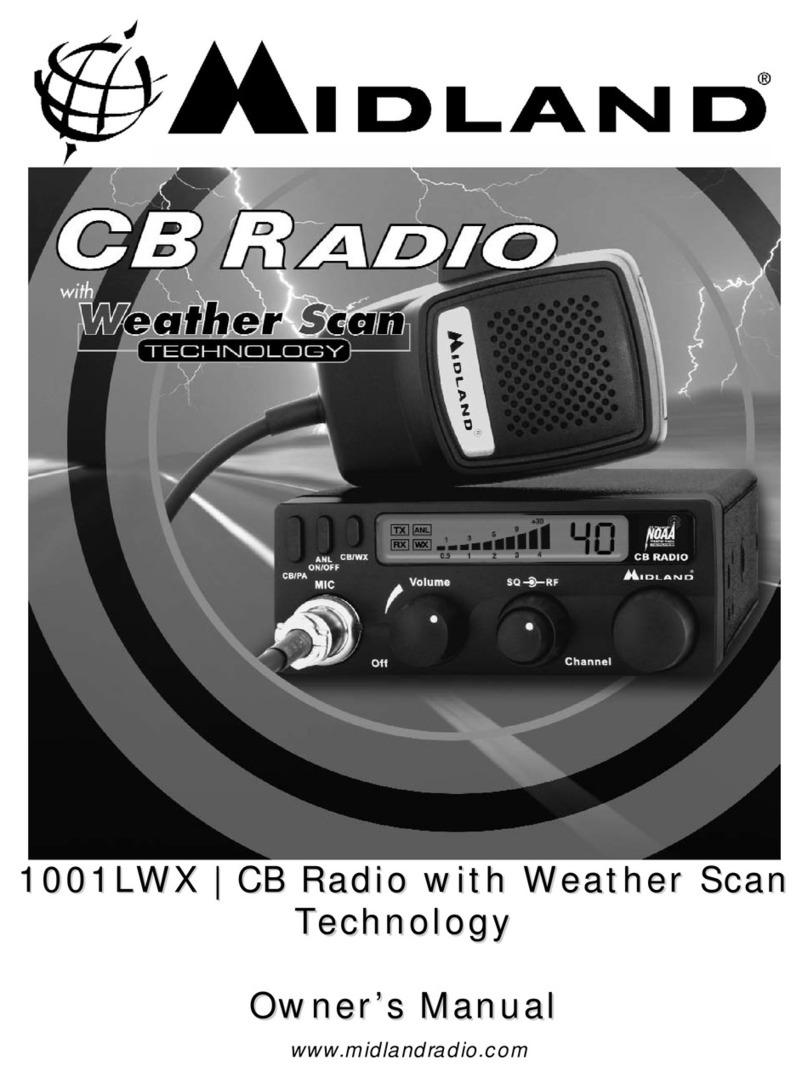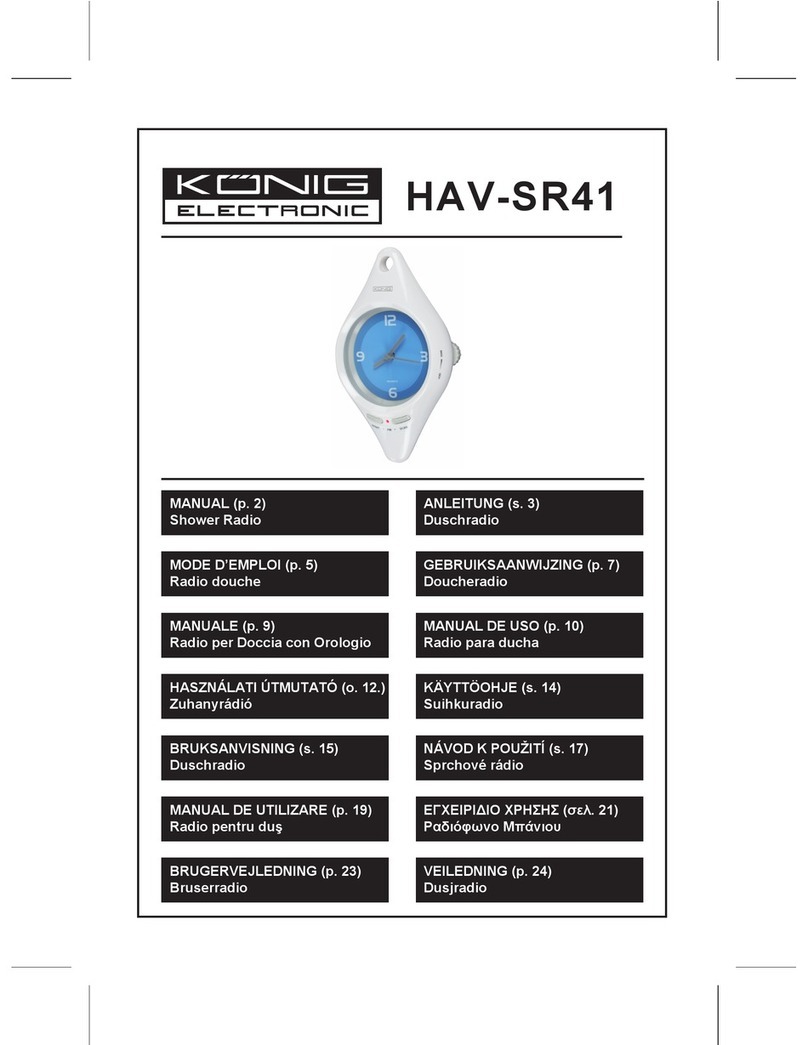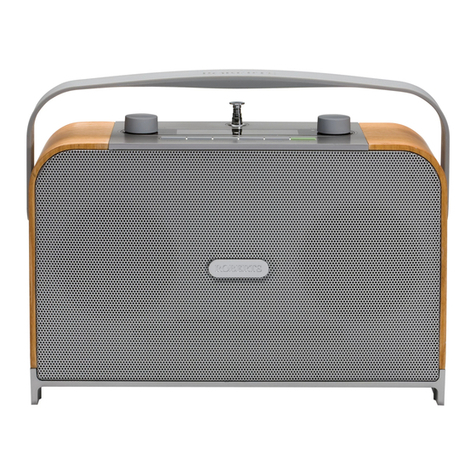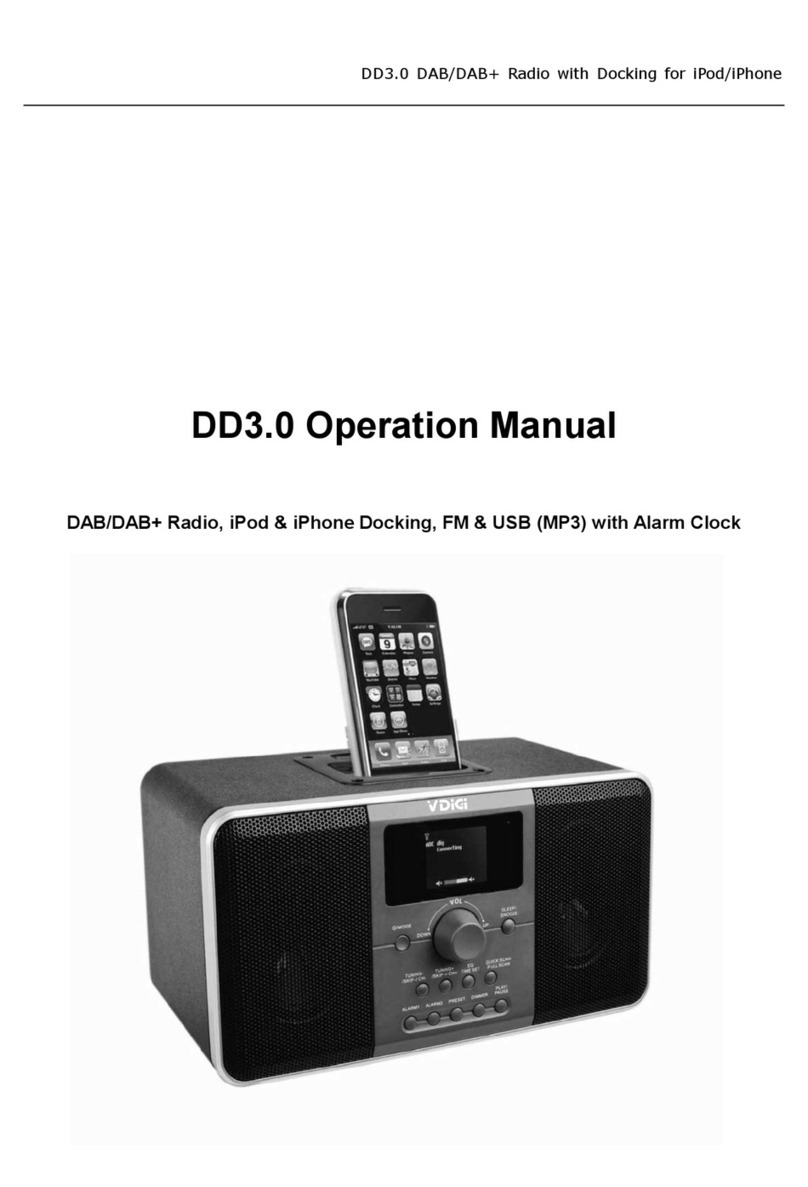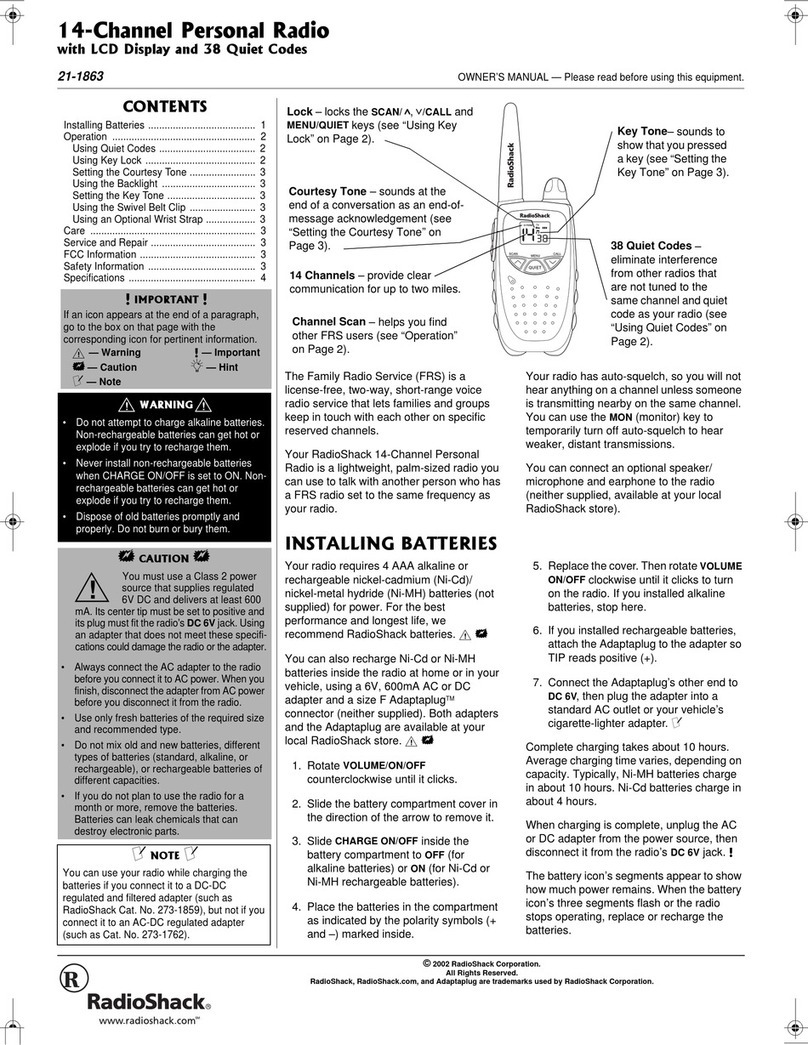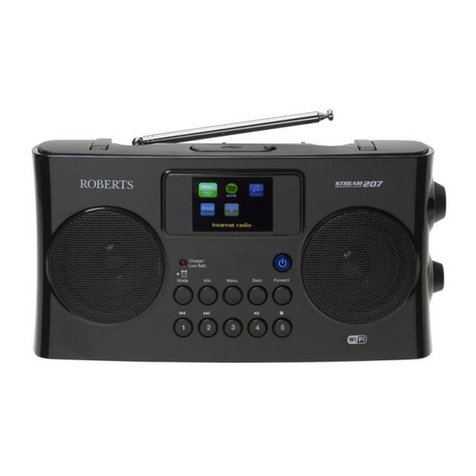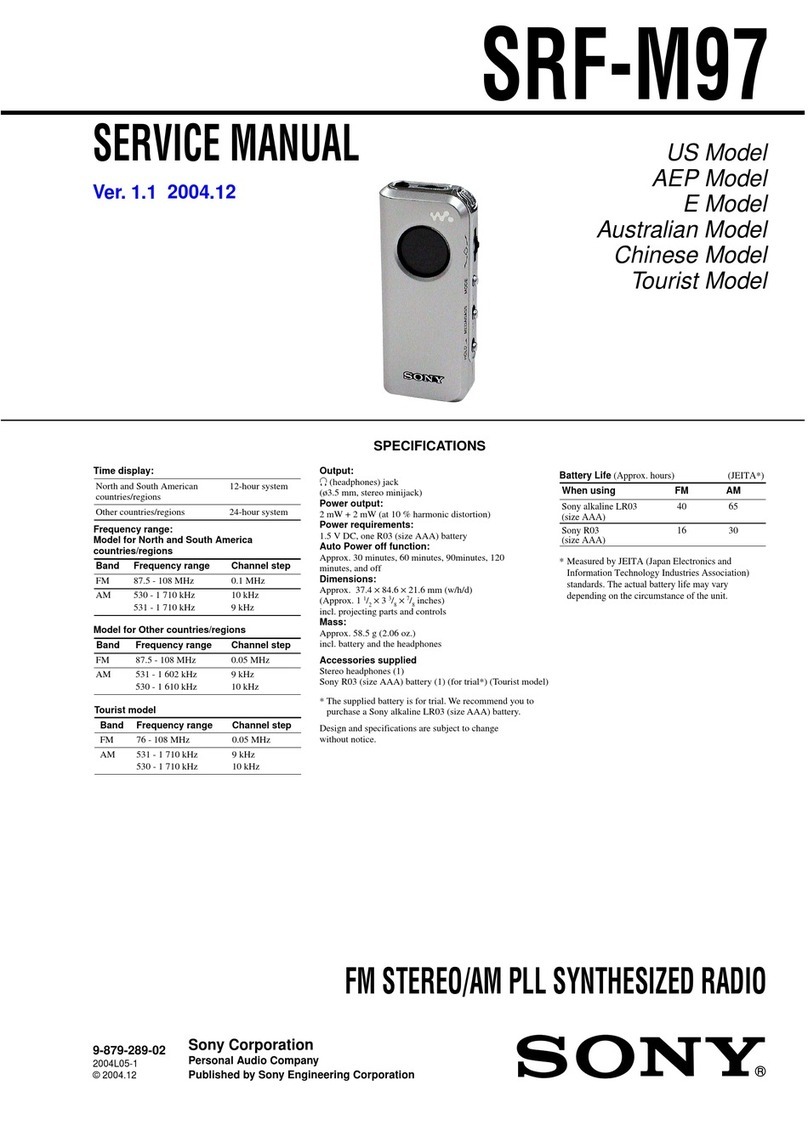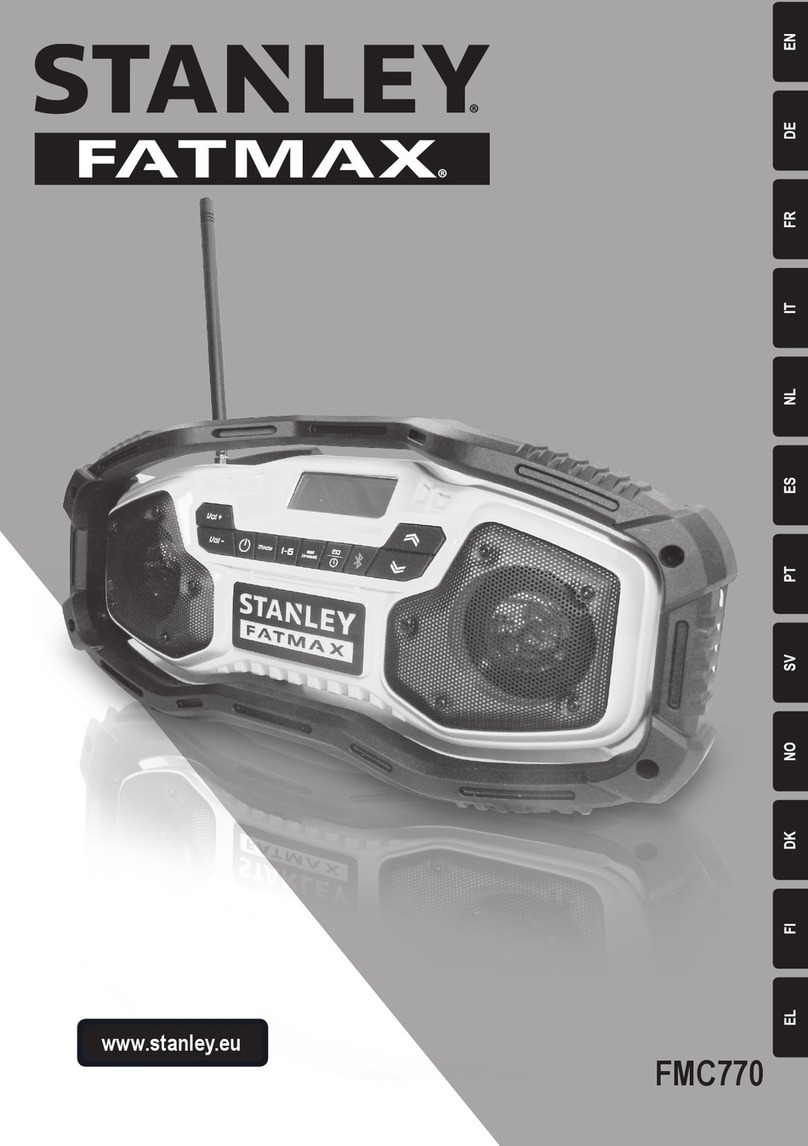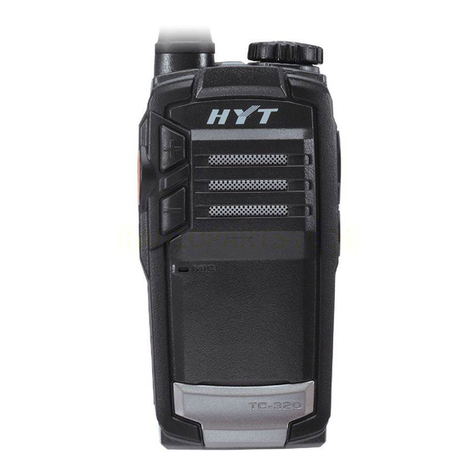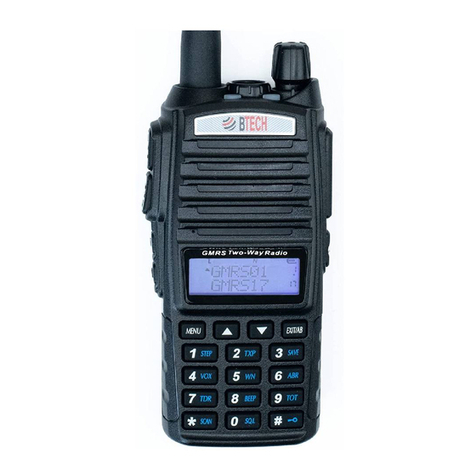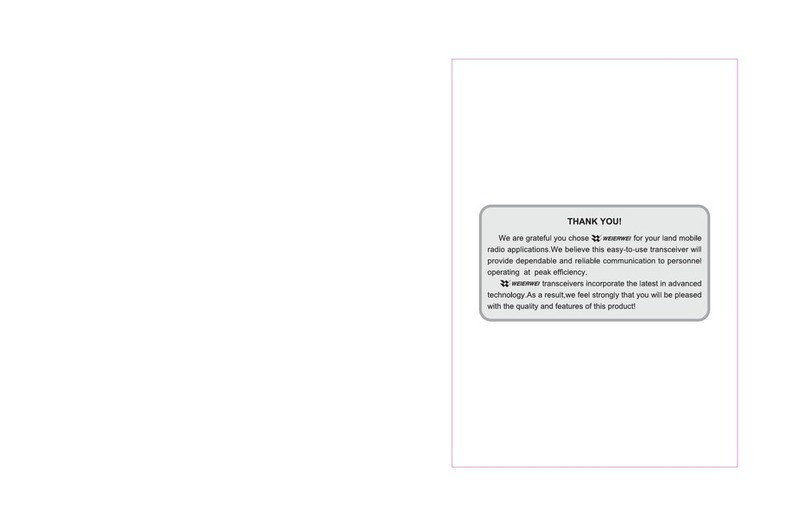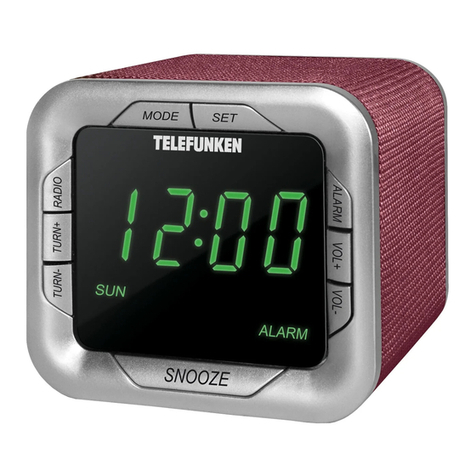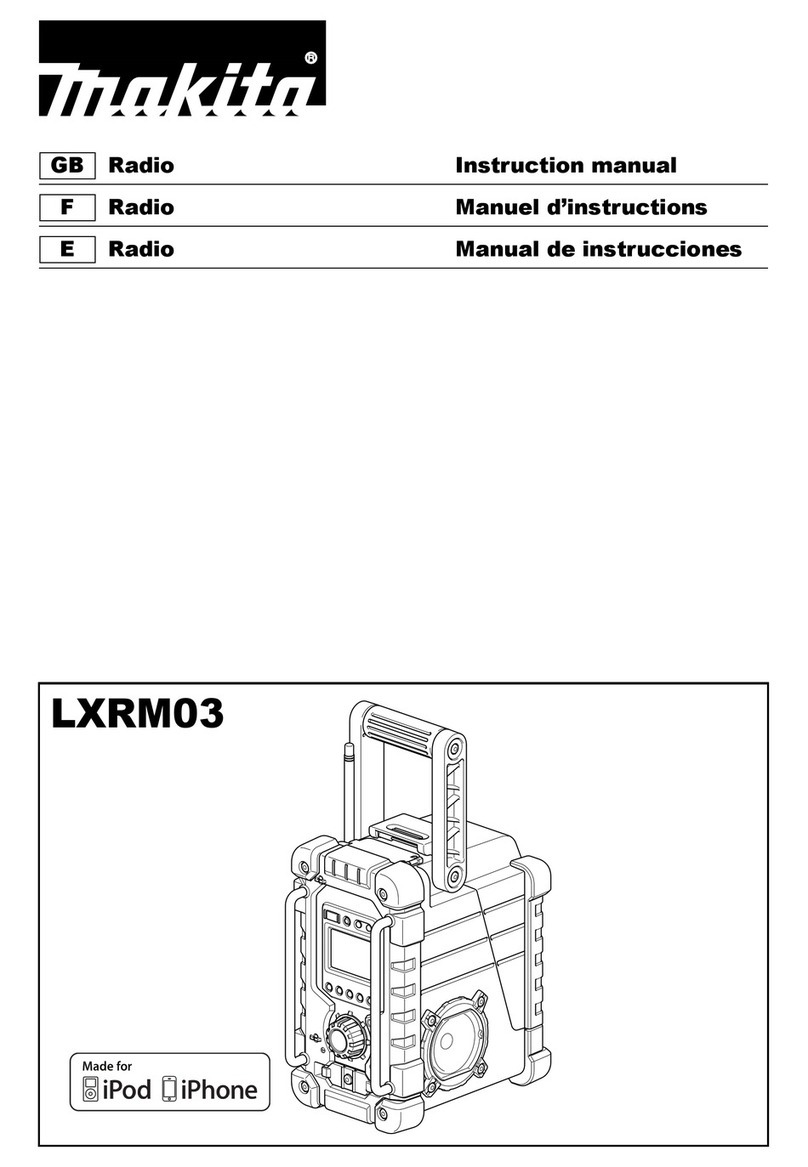
8 | | RS40/RS40-B User Guide
Trademarks
Simrad® and Navico® are registered trademarks of Navico.
NMEA® and NMEA 2000® are registered trademarks of the National
Marine Electronics Association.
DSC (Digital Selective Calling)
Digital Selective Calling offers significant safety and convenience
advantages over older VHF radios without this functionality.
• A valid USER MMSI must be entered into this radio before DSC
functions can be used.
• Many countries do not have radio repeaters that support DSC
message relaying. However DSC can still be useful for direct ship-to-
ship communication, where the other vessel is also equipped with a
DSC capable radio.
• DSC distress calls generated by this radio are limited to the same
range restrictions that apply to regular VHF transmissions. The
vessel sending a distress can only rely upon DSC if within range of a
GMDSS Coast Radio Station. Typical VHF range may be about 20NM,
though this varies greatly depending upon installation, antenna
type, meteorological conditions, etc.
ATIS (Automatic Transmitter Identication
System)
• ATIS is required for vessels making VHF transmissions whilst on the
inland waterways of the Regional Arrangement Concerning the
Radiotelephone Service on Inland Waterways (RAINWAT) signatory
countries.
• RAINWAT is an agreement to implement common principles and
rules for the safe carriage of people and goods on Inland Waterways.
• The signatory countries are: Austria, Belgium, Bulgaria, Croatia, the
Czech Republic, France, Germany, Hungary, Luxembourg, Moldova,
Montenegro, the Netherlands, Poland, Romania, Serbia, the Slovak
Republic and Switzerland.
• Where a VHF is required on the inland waterways of the signatory
countries, this must be capable of ATIS transmissions, and have the
feature activated.
• The use of ATIS is prohibited outside the European inland waterways
covered by the Basel Agreement.
